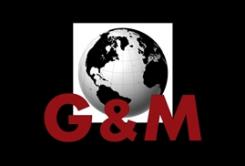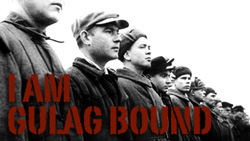 It did not surprise me to learn—and hats off to blogger Johnny Cirucci for the tip—that former Clinton Deputy Attorney General, Jamie Gorelick (at left), the well-labeled “Mistress of Disaster,” has been enlisted by BP to represent the company before Congress on the subject of the Gulf disaster.
It did not surprise me to learn—and hats off to blogger Johnny Cirucci for the tip—that former Clinton Deputy Attorney General, Jamie Gorelick (at left), the well-labeled “Mistress of Disaster,” has been enlisted by BP to represent the company before Congress on the subject of the Gulf disaster.
In reporting the move for Politico, an allegedly non-partisan journal, Abby Phillip ingenuously notes that Gorelick, now a private attorney, could just as easily have been on the other side of the table.
“Her role in the Clinton administration and her later service as a member of the 9/11 Commission,” writes Phillip, “made her a logical choice for attorney general.” The only problem, adds Phillip, were those “controversies.”
Phillip does not know the sixteenth of it. A Harvard Law grad—aren’t they all?—Gorelick assumed her Justice Department role after Associate Attorney General, Webster Hubbell, was forced out in 1994 for sundry corruptions at Hillary’s Arkansas law firm.
Back when it still did actual reporting, the New York Times discovered “a possible effort to obstruct justice by securing Mr. Hubbell’s silence on crucial elements of the Whitewater case.” To be sure, that effort would go un-investigated by Gorelick’s Justice Department.
As Deputy Attorney General, Gorelick, like Hubbell before her, served as the Clintonista equivalent of a Soviet political officer in a Department nominally headed by the feckless Janet Reno.
Gorelick got her first taste of disaster as “field commander” after the bombing of the Murrah Building in Oklahoma City on April 19, 1995.
Two months later, on June 19, 1995 Gorelick issued her now infamous “wall” memo. Following a variety of strained arguments, Gorelick concluded, “We believe that it is prudent to establish a set of instructions that will clearly separate the counterintelligence investigation from the more limited but continued, criminal investigations.”
Mary Jo White, a Clinton appointee and U.S. attorney for the Southern District of New York, immediately blasted Gorelick, saying that such separation is “the single biggest mistake we can make.”
White may have erred in thinking that the new instructive was directed at her investigation into the 1993 bombing of the World Trade Center.
She also certainly erred in thinking the instructive a “mistake.” The immediate effect of the memo—and its likely intention– was to keep the Oklahoma City investigation focused on the two “angry white men,” Terry Nichols and Timothy McVeigh.
In the aftermath of the bombing, the media and the Clinton White House were celebrating the pair as the inevitable consequence of the “Republican revolution.” This narrative seriously brightened Clinton’s once dim chances of retaking the White House in 1996. The White House wanted to know nothing more.
The “wall” prevented the FBI and the intelligence agencies from sharing information on Nichols’ seemingly gratuitous trips to the Philippines, where Ramzi Yousef and cronies had been designing new and better bombs and aerial strategies to attack the United States.
 The “wall” also allowed Gorelick to restrict the FBI investigation to Nichols and McVeigh even though numerous eyewitnesses had identified a short swarthy conspirator—the once sought-after John Doe #2 (at left) —in Oklahoma City with McVeigh on the morning of the bombing.
The “wall” also allowed Gorelick to restrict the FBI investigation to Nichols and McVeigh even though numerous eyewitnesses had identified a short swarthy conspirator—the once sought-after John Doe #2 (at left) —in Oklahoma City with McVeigh on the morning of the bombing.
In July 1996, with Clinton’s reelection now a likelihood, disaster struck once again off the coast of Long Island. TWA Flight 800 had been blown out of the sky, seemingly by missiles, in full view of thousands of people.
When the FBI made a serious attempt to get at the truth, the Clintons—Hillary was deep in the TWA 800 affair from night one–turned to the Mistress of Disaster to rein in the FBI once more.
the TWA 800 affair from night one–turned to the Mistress of Disaster to rein in the FBI once more.
On August 22, 1996, five weeks after the crash, Gorelick summoned the FBI brass to a come-to-Jesus meeting in Washington. By this date, traces of PETN and RDX found in the fuselage along the right wing had been confirmed by the FBI’s D.C. lab and reported in the Times.
More damning still, the FBI had already interviewed some 750 eyewitnesses. At least 244 of whose accounts were so specific, so consistent, and so credible that they could not be ignored.
Defense Department analysts had debriefed some thirty-four of the witnesses. There were also scores of witness drawings of a missile strike, some so accurate and vivid they could chill the blood.
I do not know what combination of carrots and/or sticks were offered to the FBI, but the investigation came to an effective end that day. What followed in the next several months was the most ambitious and successful cover-up in American peacetime history.
Given her role, the months after the crash had to have been emotionally harrowing for Gorelick, but she need not have worried.
If the Clintons failed to convince the aviation community that a mechanical failure of unknown origin blew up the aircraft, a willfully blind media proved eager to believe.
On May 7, 1997, the day after Gorelick’s 47th birthday, the Clintons appear to have rewarded her for her steely performance with a job that would pay her $877,573 in that first half-year alone, vice chairman of Fannie Mae.
According to a Lexis search, not one reporter even questioned why Fannie Mae chair Jim Johnson would appoint the inexperienced Gorelick to the most plum position in Washington. One does not have to be a cynic to suspect that the Clintons had something to do with it.
Six years and about $25.6 million later, Gorelick responded to still another disaster and took her seat on the 9-11 commission, one of five Democrats so appointed.
In testifying before that commission, anti-terror czar and Clinton suck-up Richard Clarke asked that intelligence analysts “be forgiven for not thinking about [aviation terror] given the fact that they hadn’t seen a lot in the five or six years intervening about it.”
Almost assuredly, Clarke had downplayed talk of aviation terror during those years to take Flight 800 off the table.
Almost assuredly, Gorelick took the 9-11 post to keep it off. By this time, she had not just her reputation to protect, but a small fortune.
The Politico reporter interviews one Robert Weissman, the head of Public Citizen, who scolds Gorelick for her role in the BP disaster: “Gorelick should feel some responsibility to defend the ideals that led her into government.”
Sure, Bob, and just what might those ideals be?
 Jack Cashill is the author of numerous books revealing important and underreported elements of the workings of our society and the crises we face, his latest being Popes & Bankers: A Cultural Study of Credit and Debit from Aristotle to AIG.
Jack Cashill is the author of numerous books revealing important and underreported elements of the workings of our society and the crises we face, his latest being Popes & Bankers: A Cultural Study of Credit and Debit from Aristotle to AIG.
He is also an independent writer and producer, having written for Fortune, The Wall Street Journal, The Washington Post, The Weekly Standard, American Thinker, and regularly for WorldNetDaily. Jack may be contacted at Cashill.com.
This article was originally published in WorldNetDaily and and at Cashill.com.







Speak Your Mind
You must be logged in to post a comment.